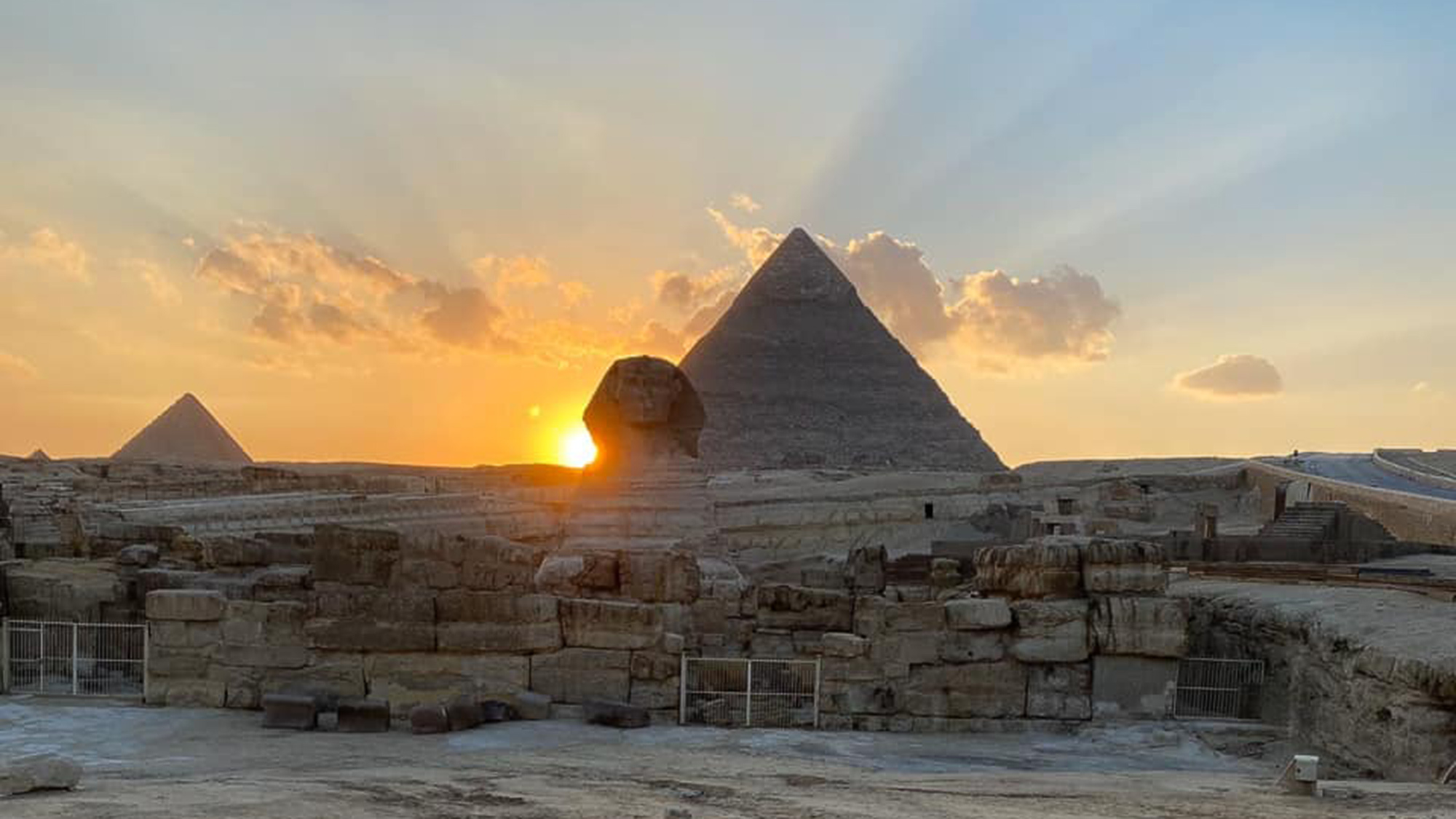The equinox reveals one of the secrets of Egypt's iconic Sphinx
The ancient Egyptians likely arranged this on purpose.

The Sphinx had a "distinctive astronomical" moment with the sun during the spring equinox when, in a shining flourish, the sun set on the shoulder of the half-man, half-lion statue on March 19, according to the Egypt Ministry of Antiquities.
This phenomenon happens only twice a year, during the spring in March and the fall equinox in September, according to the ministry.
During the equinox, Earth's axis doesn't point toward or away from the sun, meaning that the Northern and Southern hemispheres receive equal amounts of the sun's light. In other words, the day and the night are equal in length.
Related: Day and night are perfectly balanced in spring equinox photo snapped from space
It's well known that cats enjoy basking in the sun, and the 241-foot (74 meters) tall Sphinx is no exception. The mythical half-man, half-lion is carved out of limestone bedrock. Its face might show the likeness of Pharaoh Khafre, the fourth king of ancient Egypt's 4th dynasty (2575 B.C. to 2465 B.C.), who had the second and third Pyramids of Giza built, according to Encyclopedia Britannica.
The Sphinx is also strategically placed for the summer solstice in June, when the sun sets between the pyramids of pharaohs Khufu and Khafre.
The Sphinx's position during the equinoxes and summer solstice suggests that the ancient Egyptians purposefully positioned the hybrid lion-man statue. "This phenomenon proves that archaeologists were wrong when they said that the ancient Egyptians had found an ancient rock by accident and turned it into a statue of a human face and a non-human body," the Egypt Ministry of Antiquities wrote in a Facebook post.
Get the world’s most fascinating discoveries delivered straight to your inbox.
Other ancient cultures also built large monuments that captured the fleeting moments during the solstices and equinoxes, including Stonehenge in England, a "calendar-rock" in Sicily, a Neolithic henge in Germany and a Maya city in what is now Tulum, Mexico.
- 6 ancient tributes to the winter solstice
- Earth pictures: Iconic images of Earth from space
- Black marble Images: Earth at night
Originally published on Live Science.
OFFER: Save at least 53% with our latest magazine deal!
With impressive cutaway illustrations that show how things function, and mindblowing photography of the world’s most inspiring spectacles, How It Works represents the pinnacle of engaging, factual fun for a mainstream audience keen to keep up with the latest tech and the most impressive phenomena on the planet and beyond. Written and presented in a style that makes even the most complex subjects interesting and easy to understand, How It Works is enjoyed by readers of all ages.

Laura is the managing editor at Live Science. She also runs the archaeology section and the Life's Little Mysteries series. Her work has appeared in The New York Times, Scholastic, Popular Science and Spectrum, a site on autism research. She has won multiple awards from the Society of Professional Journalists and the Washington Newspaper Publishers Association for her reporting at a weekly newspaper near Seattle. Laura holds a bachelor's degree in English literature and psychology from Washington University in St. Louis and a master's degree in science writing from NYU.
 Live Science Plus
Live Science Plus






